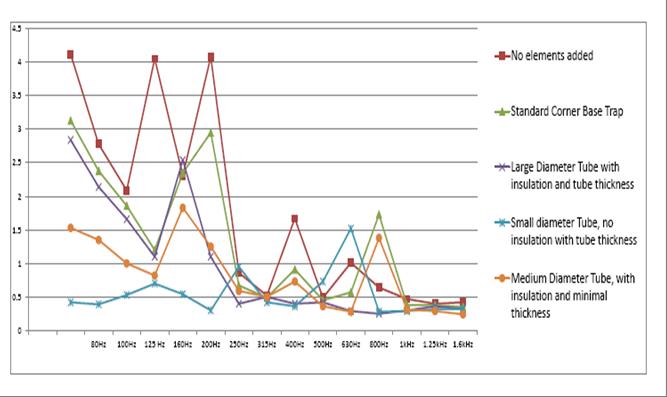
Bonnie Schnitta –bonnie@soundsense.com
SoundSense, LLC
46 Newtown Lane, Suite One
East Hampton, NY 11937
Popular version of paper 4aAAb
Presented Thursday morning, June 6, 2013
ICA 2013 Montreal
As the baby boomers age, so has the number of noise complaints about their ability to hear in a public space. These public spaces range from courtrooms to restaurants. A public space also includes many acoustically critical spaces, such as hospitals, classrooms, conference rooms, or listening rooms. The ideal goal of speech transmission is that listeners can understand speech information accurately and effortlessly. Hearing aid systems help to improve the ability of individuals with a hearing disability, or degradation, to hear. Unfortunately, most listeners with mild or moderate hearing loss do not wear hearing aids all the time. Additionally, common hearing aids amplify not only speech but also background noise. This fact coupled with the vanity factor has now placed a strong emphasis on designing an acoustic environment that minimizes background noise and helps with speech intelligibility. The purpose of the newly patented acoustic devise was to help architects, designers, and engineers more easily achieve the goals of speech intelligibility.
Research has shown over and over again that speech intelligibility is reduced with increased reverberation time, or echo, in a room (1- 3). Nabelek and Robinson (4) also showed that, in the absence of noise, speech intelligibility was inversely related to reverberation time. Finitzo-Hieber and Tillman performed various fixed speech-to-noise level differences in rooms with various fixed reverberation times. The general finding was that speech intelligibility decreased with increased reverberation time. More important, hearing impaired people were more sensitive to reverberation than normal hearing people (5). Moore (6) researched this to a greater depth to show that even listeners with moderately impaired hearing, which is the majority of the aging population, can usually achieve high speech intelligibility in a quiet environment when the presentation level is sufficiently high. The ability to hear decreases as noise increases. This is true for baby boomers both with and without hearing aids.
This extensive research leaves no question that the general goal for an acoustic environment for the elderly should be:
With only the .4 as a goal in all frequencies a simple case study was performed, showing that this is easily accomplished. The results showed:

Historically the approach has been to reduce the reverberation time by adding absorption from 1”-4” fabric wrapped panels or foam on the walls, or similar acoustic materials on the ceiling in the form of acoustic ceiling tiles. There are also spray-on acoustic material, or acoustic fabrics, etc. The drawback of most of these acoustic products is that the absorption has its absorption predominantly in the speech frequencies. This historic approach does not address all the challenges of speech intelligibility. That is, low frequency noise and sounds remain in a high reverberant state. Consequently, there is also a need for the reduction of lower frequency sounds within a room, such as noise typical of mechanical equipment, or sounds associated with a low frequency voice or music. These standard products also cannot be painted or washed. When the application is a classroom, doctor’s office or a hospital there is the additional constraint that the acoustic material must be washable and preferably paintable.
Architectural Acoustic Device based on Patent, US 8,136,630 B2, or Tuning Tube, meets these demands. Although this device can address all frequencies, this device can be manufactured to focus its absorption on just the lower frequencies of concern to solve the problem of lower frequency absorption. It is also washable. It can be used as a standalone unit in a room and take on the appearance of a column, or equivalent. The Tuning Tube can also be used in combination with, or hidden behind, other architectural features. The common location for a tuning tube to be hidden is behind the molding at the wall/ceiling interface.
This paper presents not only the basic scientific foundation of the Tuning Tube, but also a case study that is typical of other case studies. The case study showed that the treatment of the reverberation time only in the speech frequencies is insufficient for the hearing impaired and typically most people over the age of 55. Attention to the detail of the acoustic design inclusive of the lower frequencies is paramount for hearing optimization and general comfort within the room.
The Paradise Architectural Acoustic Device, or Tuning Tube, is a sound modifying architectural structure. The architectural structure can appear to be any one of standard architectural structures that can be used in a room, from baseboards to crown moldings or ceiling beams. This allows the architectural devices to not only reduce or correct the decay time in the room, but also make certain that the architectural elements do not produce undesirable effects.
REFERENCES
(1) W. Yang and M. Hodgson, “Auralization study of optimum reverberation times for speech intelligibility for normal and hearing-impaired listeners in classrooms with diffuse sound fields”, J. Acoust. Soc. Am., (120), p 801-807, Aug. 2006.
(2)
W. Yang and J.S. Bradley, “Effects of room acoustics on the intelligibility of speech in classrooms for young children”, J. Acoust. Soc. Am., (125), p922-933, Feb 2009.
(3)
J. S. Bradley, “Speech intelligibility studies in classrooms,” J. Acoust. Soc. Am., (80), p846-854, 1986.
(4)
A. Nabelek and P. Robinson, “Monaural and binaural speech perception in reverberation for listeners of various ages,” J. Acoust. Soc Am., (71), p 1242-1248, 1982.
(5) Finitzo-Hieber and T. Tillman, “Room acoustics effects on monosyllabic word discrimination ability for normal and hearing-impaired children, J. Speech and Hearing Res., (21), p 440-458, 1978.
(6)
B.C.J. Moore, “Cochlear Hearing Loss: Physiological, Physiological, and Technical Issues”, 2nd ed. (Wiley, Chichester), pp 332.